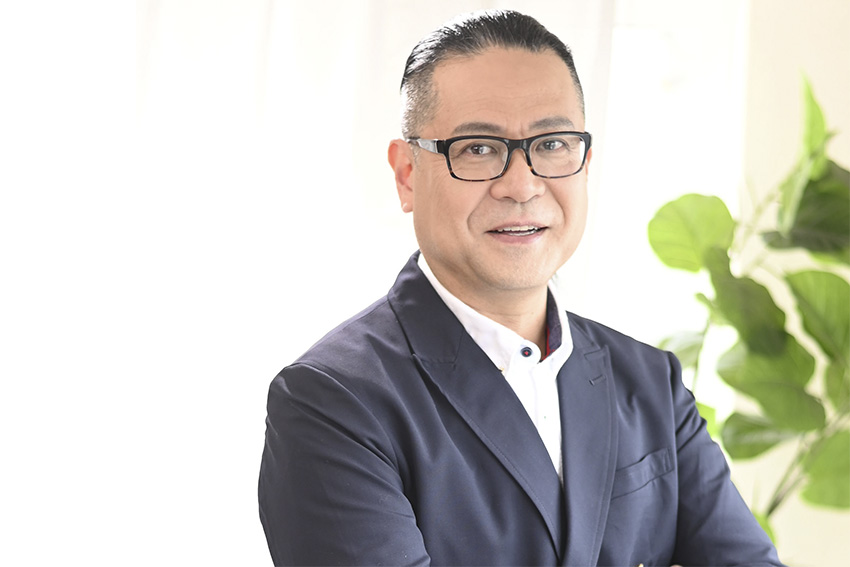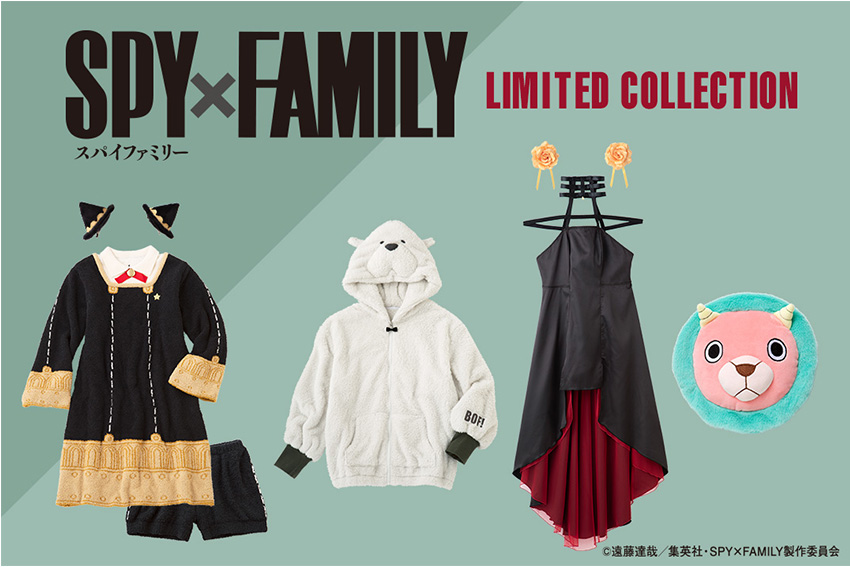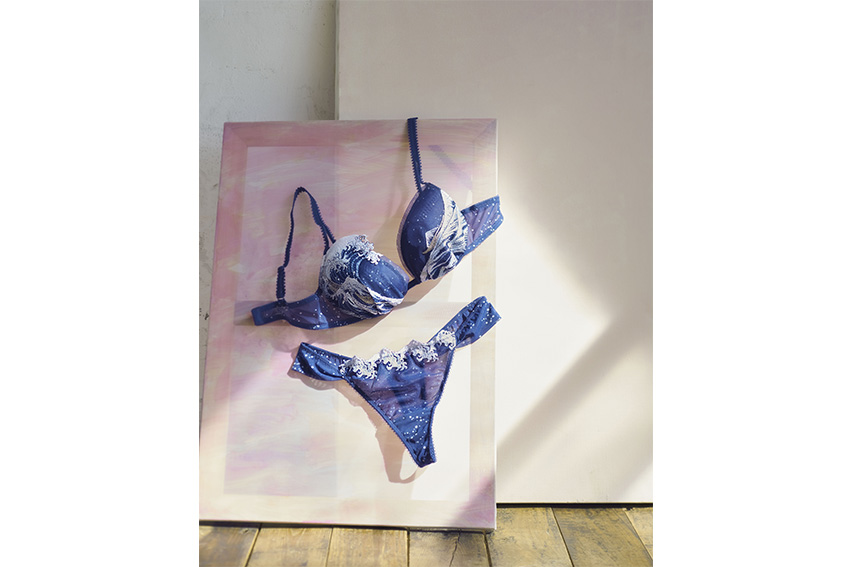Through truly appreciated lingerie products; Peach John is enabling its customer to exude confidence in their daily lives.

Japan has a historically deep clothing culture with examples such as kimonos and yukatas. This clothing is characterized by timeless lines that have gone through numerous eras with improvements over time. Today, Japan is famous for its cultural heritage, craftsmanship, quality, and innovative designs and technology integrated into supply chains. How would you define the uniqueness of Japan’s fashion and apparel industry?
The strengths lie in the ability of Japanese companies to lower production costs while maintaining high-quality. Speaking of the Japanese market, the country has four distinct seasons with its own apparel selection. This is opposed to the fast fashion model that has universal lines that go throughout all seasons.
In the past, sellers could control trends by watching fashion shows in Paris and London. Now, however, fast fashion apparel companies have become seasonless, with companies instead looking to cater directly to the needs of customers. Before, influential brands would tell patrons that blue was the color of the season, for example, and all the makers would follow suit and create blue outfits. Now, with social media penetration, things are much more diversified, so it has become difficult to make a specific product become popular. It has almost flipped, and makers are now trend followers rather than trend setters.
PEACH JOHN takes the approach of balance, of having a balance between opportunities and customer needs. Customers don’t want just to create everything themselves, so it is important that companies provide direction and hints on what kinds of looks are currently trending. Finding a trend that meets a customer’s needs is what is most important.
As a Japanese company, how do you decide on the trends to explore? How do you explore those opportunities while staying true to your own brand?
Japanese appeal comes from cuteness, which is known as kawaii here. Realistically, I think that kawaii differs from cute, but this is the closest word in English. The word can refer to exterior cuteness as well as cuteness on the inside.
A mission we have with our products is to shift the mindsets of wearers, allowing them to exude more self-confidence and be more kawaii both outside and inside. Regardless of body size, shape, we want every single customer to feel confident in themselves. We categorize customers based on their mental age rather than their physical age, basically measuring how old they feel. Interestingly, we are one of the very few apparel companies taking this approach. If we go by age, a customer would only stay loyal for three to five years, but by categorizing on feeling instead, we can retain loyalty longer.
Our company is not omnichannel like many other apparel makers because after following up with customers, they will leave after some time. This means that we need to focus on acquiring new customers instead. Our customer range is limited to those looking for kawaii, and we are sure that they will leave after a period of time. We seek to create a more even relationship with our customers.
We have collaborated with SPY×FAMILY and other anime properties. With those we try to mix our style with that style of the anime. It is this approach that we’ve taken that has created some synergistic results. The purpose of those collaborations is to act as an entry point for anime fans that don’t know about PEACH JOHN. We only pursue collaborations that result in synergies promoting PEACH JOHN.

Collaboration products with SPY×FAMILY
Kawaii culture, the weakened JPY, and the growth of inbound tourism have all made Japan a very attractive destination for international shoppers. I think it is reasonable to think that tourists will take advantage of the current situation to bring back some unique Japanese clothing to their home countries. What opportunities does inbound tourism create for your business, and how are you taking advantage of them?
Like fast fashion, we have retail stores overseas, so there is demand for PEACH JOHN. With the JPY depreciation, it is much cheaper to purchase in Japan now. As an executive, however, I would rather not make our business too reliant on inbound tourism. Rather than creating products that focus on inbound tourists, we create products that are based on the uniqueness of the Japanese style. If these products also suit the needs of overseas markets, that would be great. One example is a bra we released based on the Hokusai Wave, which became hugely popular overseas.

The Mt Fuji bra set inspired by the Hokusai Wave
This product along with ones based on Fujin and Raijin were initially launched to appeal to the Japanese audience, but very quickly popularity spread. We are a Japanese brand, so we understand that we need to be unique in order to be competitive.
In 2023 the global apparel market was valued at about USD 1.7 trillion and in 2030 it is estimated to rise to about USD 2.2 trillion. Some of the reasons include the global population increase as well as an increase in disposable income among emerging economies. In your opinion, what will be some of the biggest growth drivers for the industry?
Functional outfits would be a sure-fire success, whereas with PEACH JOHN’s kawaii style, we would experience a short-term boom only; something that goes against our mission. Rather than targeting an area, instead we would prefer customers there to choose our products because they are interested in the kawaii Japanese style. If our products were chosen, it would be a great honor.
PEACH JOHN was founded in 1994 originally as a mail order service for imported underwear. In 2008 Wacoal Holdings took control of the company and your business has expanded ever since, opening stores all across the country as well as stores in Hong Kong and Taiwan as well. How has your business over time and what do you consider some of the most important milestones of your company?
I actually got my start in Wacoal Holdings, and I think in the 30-year history of the company, the biggest milestone was the acquisition by Wacoal Holdings. Before the acquisition, the founder, Ms. Noguchi’s instincts drove the company, whereas now we are part of the Wacoal Holdings group, data analysis and company strategy are what drive decisions. The mail order system ended in 2018, and we have shifted that business online. We used to be the number one Japanese mail-order lingerie brand, but by shifting to e-commerce, we’ve become a late-comer. That was the biggest business model change, and honestly speaking, we have found it difficult to lead customers to specific offerings.
When we made the shift from catalogs to e-commerce, we didn’t place a strong emphasis on our stores. Now however, stores are an integral part of our strategy. This is because you can touch, feel, see, and try the products in a real store, whereas online, there are limitations. We are proud to say that the hospitality at PEACH JOHN stores is excellent. Among all Japanese lingerie makers we are the best, and now we can bank on our 30 years of history. Currently, we have 40 stores, and that is our maximum. We look to limit the number of stores in order to maintain brand integrity and avoid spreading ourselves too thin. Many Japanese firms are moving into robotics so we see this as an opportunity to provide the best human-to-human service in our stores. In terms of e-commerce, however, we are still finding it challenging to discover the ideal way to showcase the best features of our products.
You’ve talked about some of the challenges of e-commerce, but in addition to your online store you also have a strong social media presence. You have 282,000 followers on Instagram. How important is it for you to continue building this online presence, and what role does it play in your business?
The biggest advantage of having a strong online presence is being visible to overseas customers. Rather than push customers to us, we would rather pull them in. With social media, it is important to focus on what you are conveying instead of the tools used. We have tried using social media influencers and celebrities, but we learned that this doesn’t necessarily equate to an increase in sales.
From our experience, we learned that we need to set clear key performance indicators (KPIs) before determining who to collaborate with and for what purpose. Before, it used to be just photos, but now, social media allows videos, which are better at conveying passion, which is a great advantage. Influencers can speak about the appeal of PEACH JOHN using their own words.
Your company offers a variety of brands and products, ranging from lingerie to beauty creams, and you even cover pajamas and other loungewear. In addition, you also cater to a wide age range, such as your sister brand, GiRLS by PEACH JOHN, which is marketed towards women in their late teens and early twenties. What makes your brands and products unique, and what are some of your competitive advantages in this area?
It is true that we are trying to diversify and discover new opportunities. We started off with bust creams and hip creams, which correlate with underwear. We are currently selling these products with underwear.
Ideally, we would like to introduce a culture in which customers use our creams on a regular basis. We are also looking into being more aggressive with the introduction of these brands overseas.
Is this part of a larger goal to become a more complete business in the future?
The first step is to continue to increase our core business with lingerie. However, as I explained earlier, there is a limit to our expansion in lingerie. Collaboration will also be key, and all of these out-of-the-box collaborations bring more attention to the PEACH JOHN brand, thus creating further touch points. Ideally, we are looking to work with companies that make products that we cannot. I think a core of this is the fact that the PEACH JOHN license is an affordable option for companies looking to leverage our brand name.
We saw in our research that you are planning on introducing a new lingerie product in September 2024. Can you tell us about some of these new products that you are launching later this year?
PJ BASIC is the new lineup of products that we are introducing later this year. The price range is quite affordable. We are looking to attract customers that would typically go to fast fashion brands. The idea is to then progress those customers into the main PEACH JOHN branded products. Additionally, we are looking to launch a PJ BASIC store which should also be in September 2024.
Imagine that we come back on the very last day of your presidency and have this interview all over again. What goals or dreams do you hope to achieve by the time you are ready to pass the baton onto the next generation of PEACH JOHN executives?
I believe that by that time we will have expanded overseas and hopefully many people abroad will know of PEACH JOHN. It is important to us to continue to convey our message; that we wish everyone who uses PEACH JOHN products are happy, lively, and confident in themselves.
For more information, visit their website at: https://www.peachjohn.co.jp/shop/
0 COMMENTS